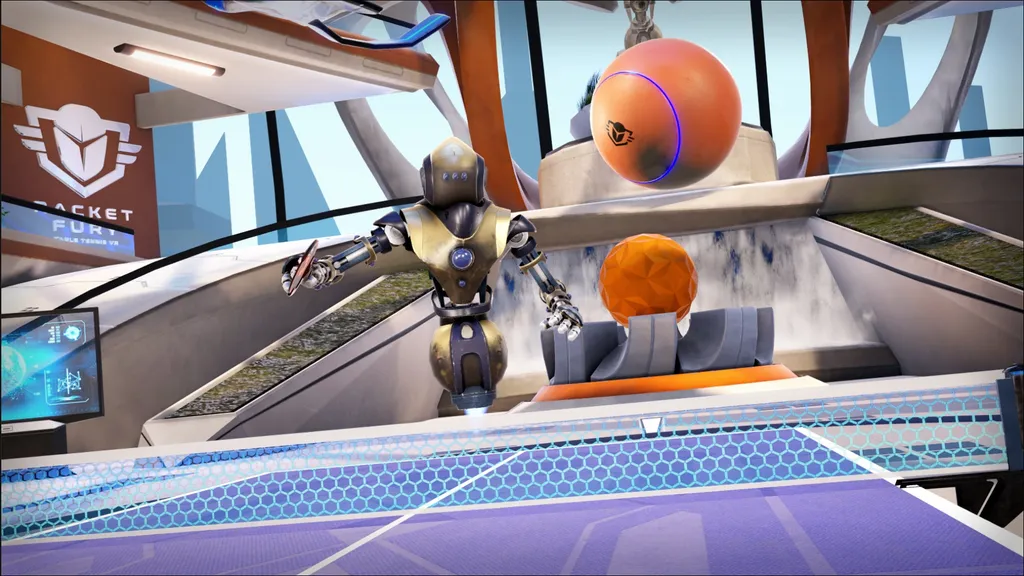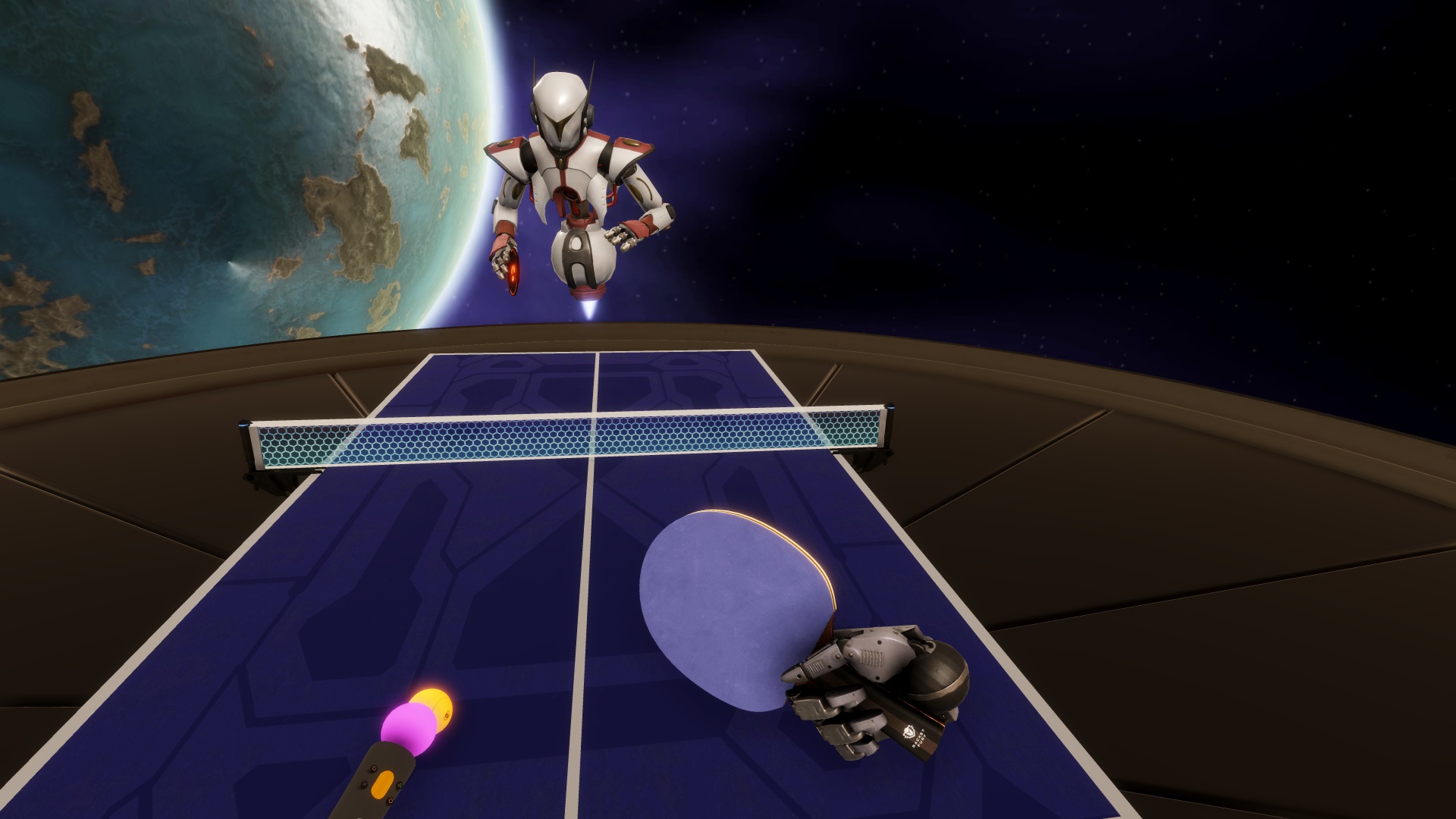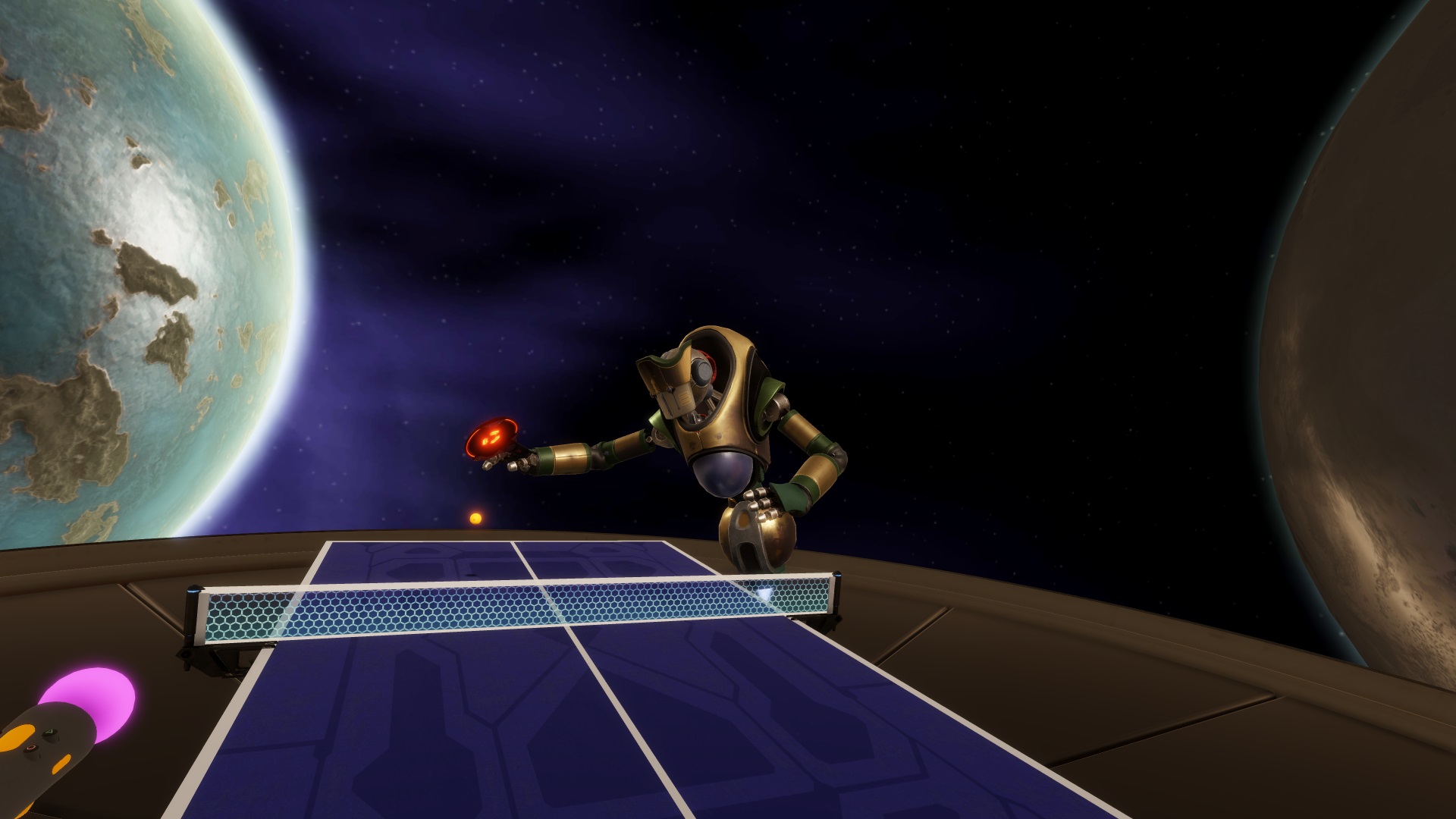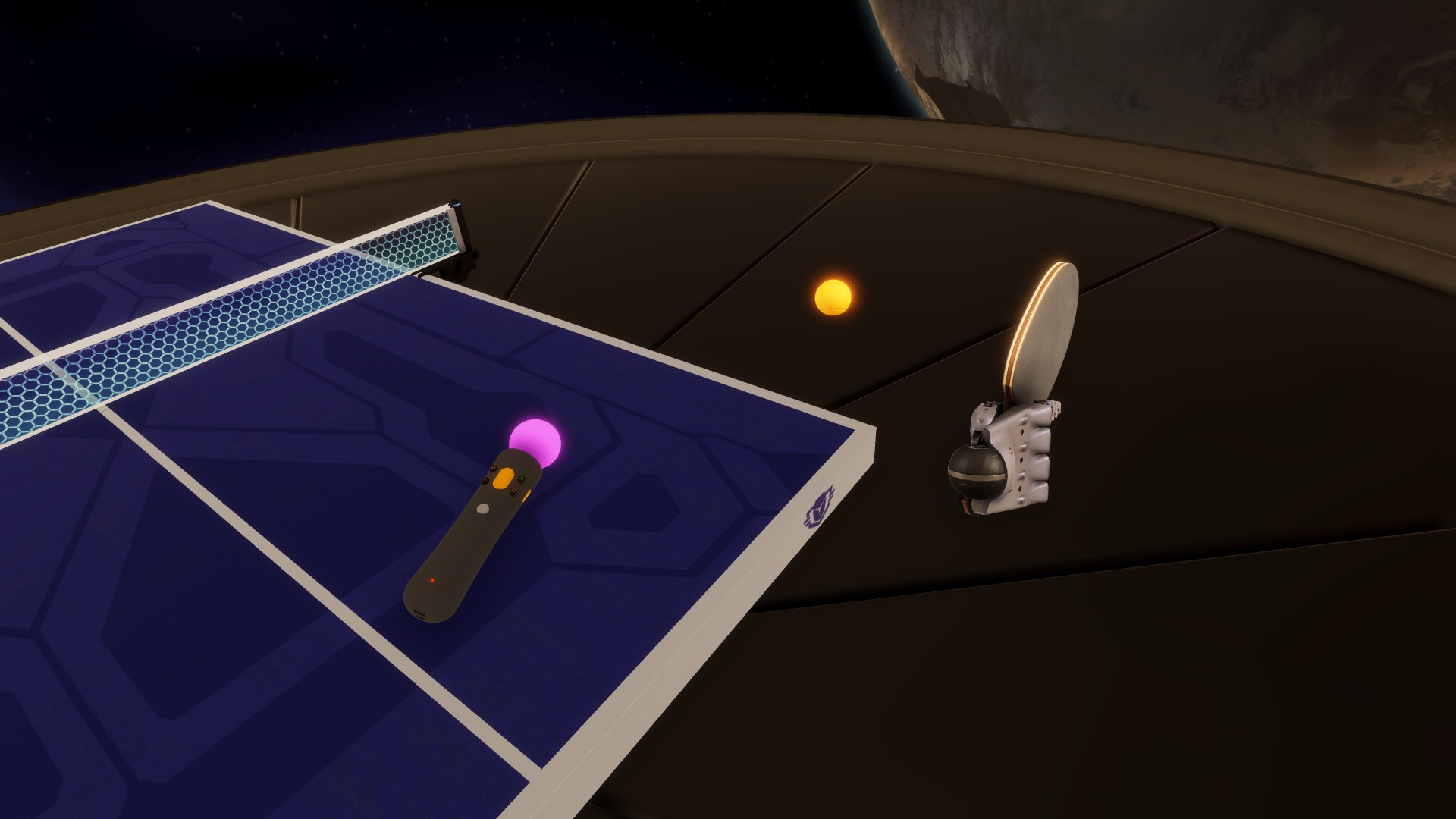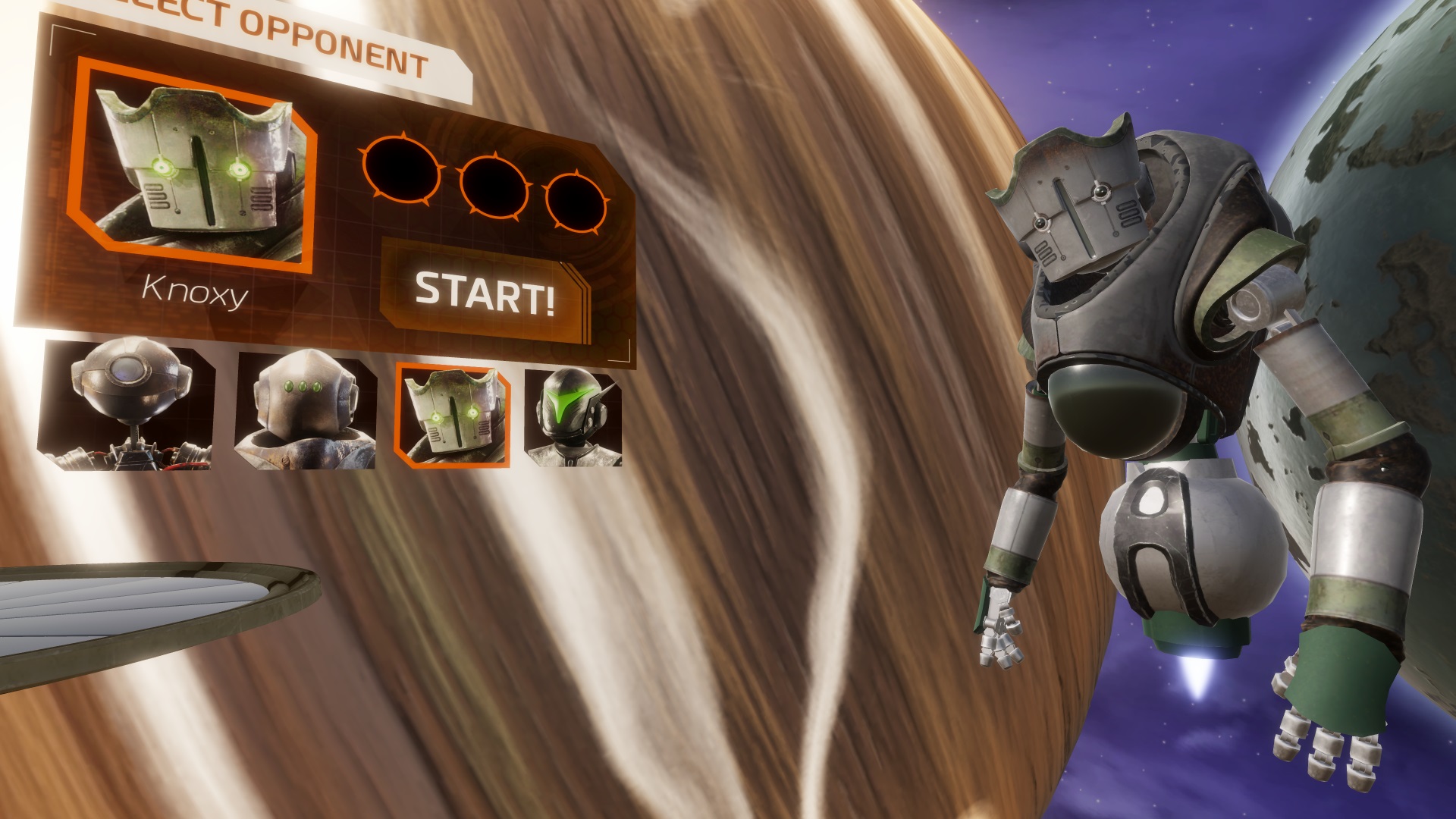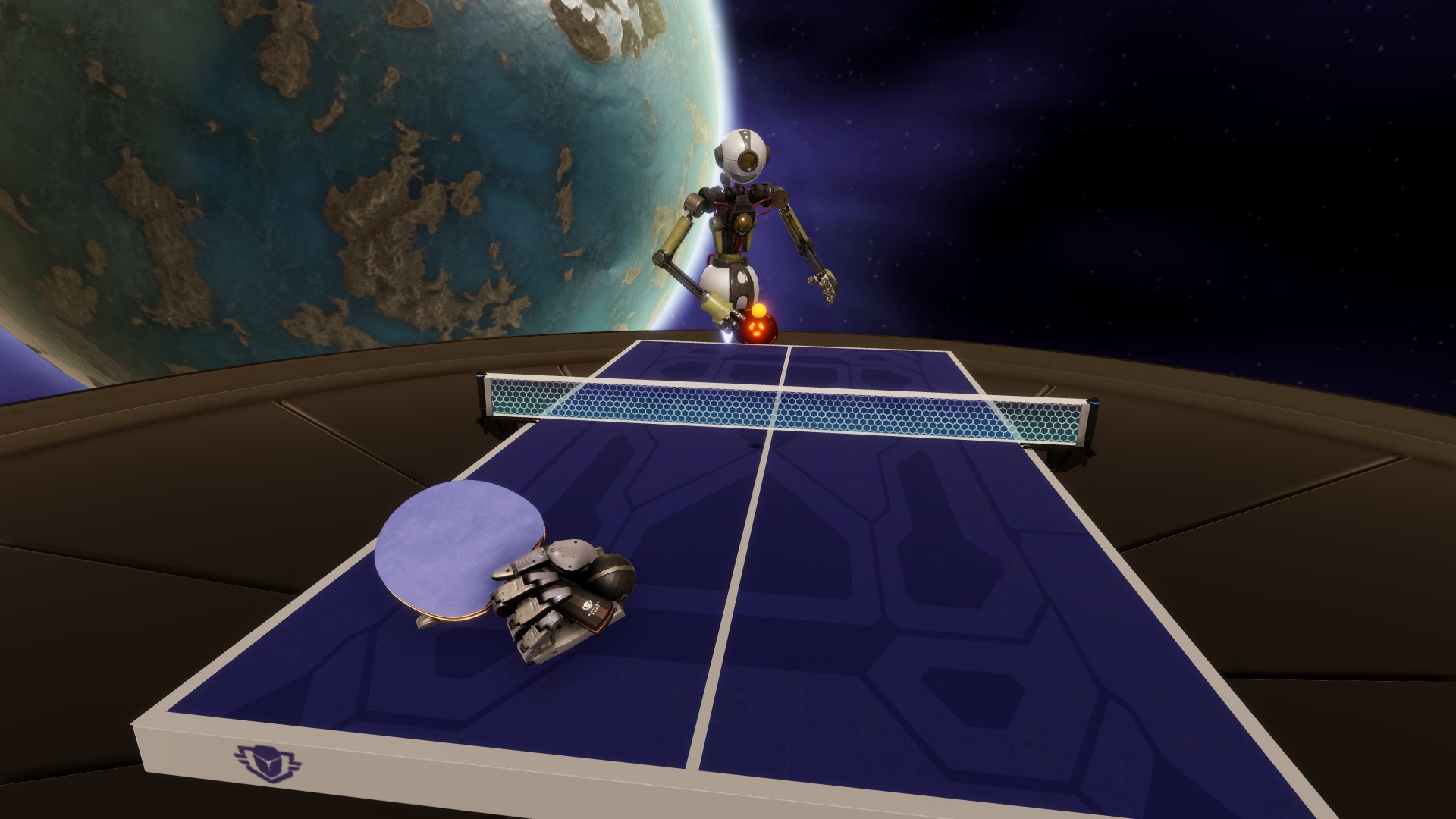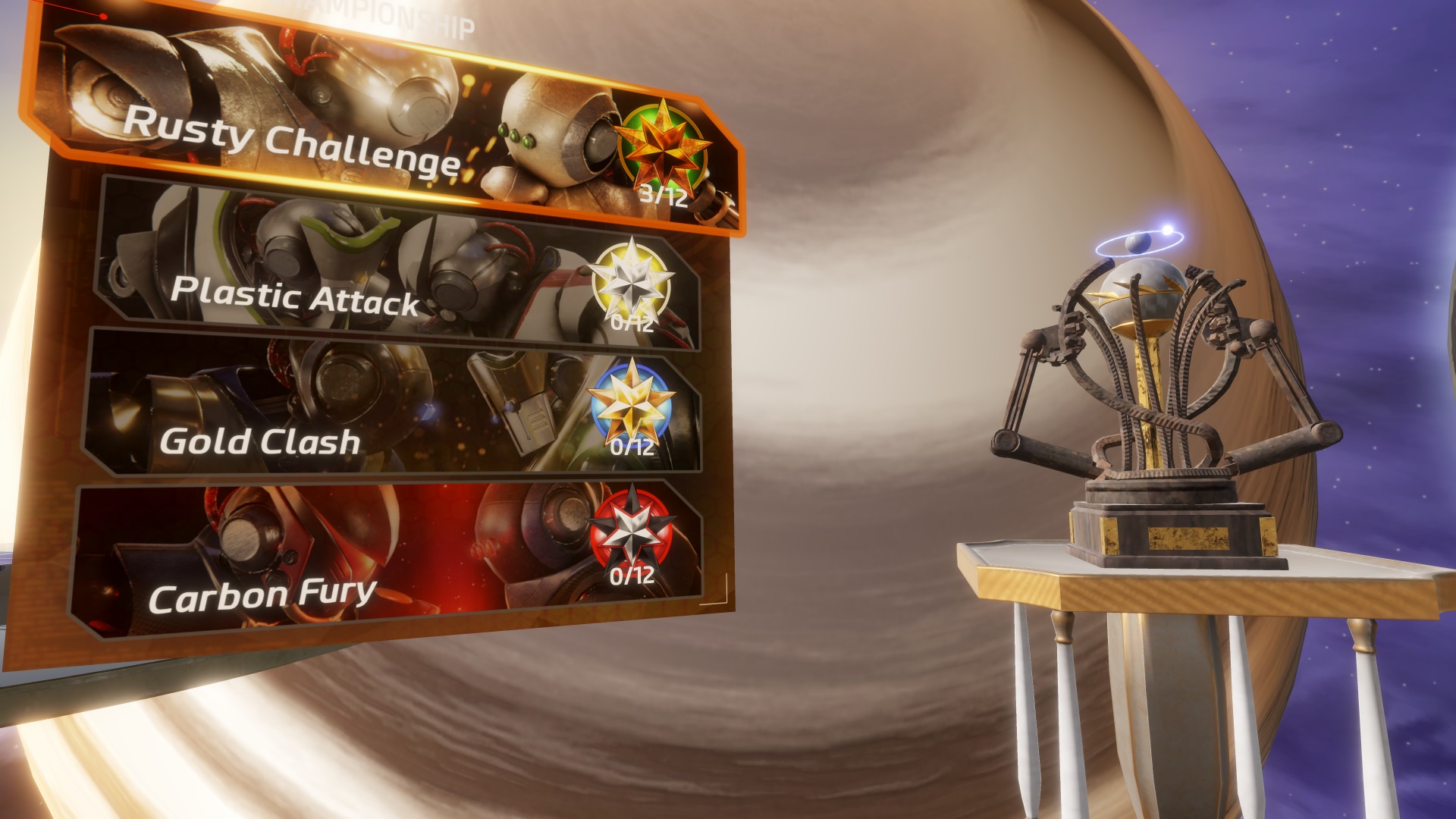VR is best used to replicate experiences we can’t actually have in the real world, whether it be climbing a treacherous mountain or piloting an X-Wing. Table tennis isn’t one of those experiences, but Racket Fury: Table Tennis does its best to make it one by throwing you against robotic masters in outer space.
What is realistic about the table tennis experience in Racket Fury, however, is how supremely frustrating it is – you’re much better off just buying a cheap ping-pong table and ignoring the PlayStation VR option altogether.
If you’ve ever played table tennis before, you already know the basics of Racket Fury. Using two PlayStation Move controllers, you must toss a ball into the air and smack it with your racket to send it bouncing across to your opponent, who then hits it back. Despite the age of the Move technology, smacking the ball back and forth across the table feels fantastic, and you have plenty of options for adjusting the angle, height, and position of the table to fit your setup. In my case, I actually found standing up to make it hard to gauge where a shot would land, and I ended up sitting on my couch for the majority of my time with the game.
The frustration comes a little earlier, because serving is inconsistent to the point of screaming, which I did on numerous occasions while struggling to beat my opponents. You must “let go” of the ball with your non-dominant hand before you’re able to serve it with your dominant hand, but the process of moving one Move controller out of the way to do this often leads to the camera losing track of the other controller’s position momentarily. This leads to a lot of missed or poorly-hit serves, often resulting in a free point for your opponent. You can toss the ball higher into the air to give yourself enough time to serve it, if you want, but it’s nearly impossible to do so with any sort of power or finesse.
Aside from a practice mode and a customization tool for an avatar you hardly ever see, the only mode included in the PlayStation VR version of Racket Fury is a single-player championship. It’s split across four difficulty levels, with four opponents in each, and it’s here where I encountered an issue even more frustrating than the serving: the difficulty. The first four opponents you face aren’t pushovers, but hitting the shots you need to hit and playing defensively will result in a win more often than not. Reach the fifth opponent, however, and get ready to feel like a worthless loser who should never have picked up a virtual racket.
Spike a perfectly placed shot and it will be sent back at blazing speed into the one area you can’t reach. Return a tricky serve and watch as the next shot barely bumps your corner. Through all of this, the robot dances to taunt you for your poor abilities.
I’m not the best table tennis player in the world, but I’m convinced Forrest Gump couldn’t beat Racket Fury. It took three hours just to beat that opponent, after which I was covered in cold sweat and had sprained my elbow and shoulder to the point of severe pain.
The next opponent was even more demoralizing, seeming to pick apart every weakness I had with only the second or third shots of a volley. And don’t think that you can pause the game to gather your composure before you have to return a serve, because hitting the menu button doesn’t actually pause anything.
It would be easier to forgive Racket Fury for all of this if it included an option to play against your friends, but at launch, the game has no multiplayer on PlayStation VR. Developer 10Ants Hill is planning to add it in an update over the next few months, but it would have been a better idea to delay the game until it was ready. The PC VR version for Rift and Vive have multiplayer included. Right now, it feels unfinished on PSVR, even at $20.
Extremely simple and frustrating beyond belief, Racket Fury is disappointing because there is a good game underneath it all. Never has performing an action in a VR game felt so accurate to the real thing, and better balancing and more modes could turn it into a must-have for sports fans. Right now, however, it’s very far off from being that game, and you might have to spend a few hundred dollars extra to afford anger management sessions.
Racket Fury: Table Tennis is available for $19.99 on PSN or for just $9.99 on Steam — with multiplayer. Read our Game Review Guidelines for more information on how we arrived at this score.
Gabe Gurwin is a freelance journalist that covers tech and games. Follow him on Twitter for more: @GamingAngelGabe.

